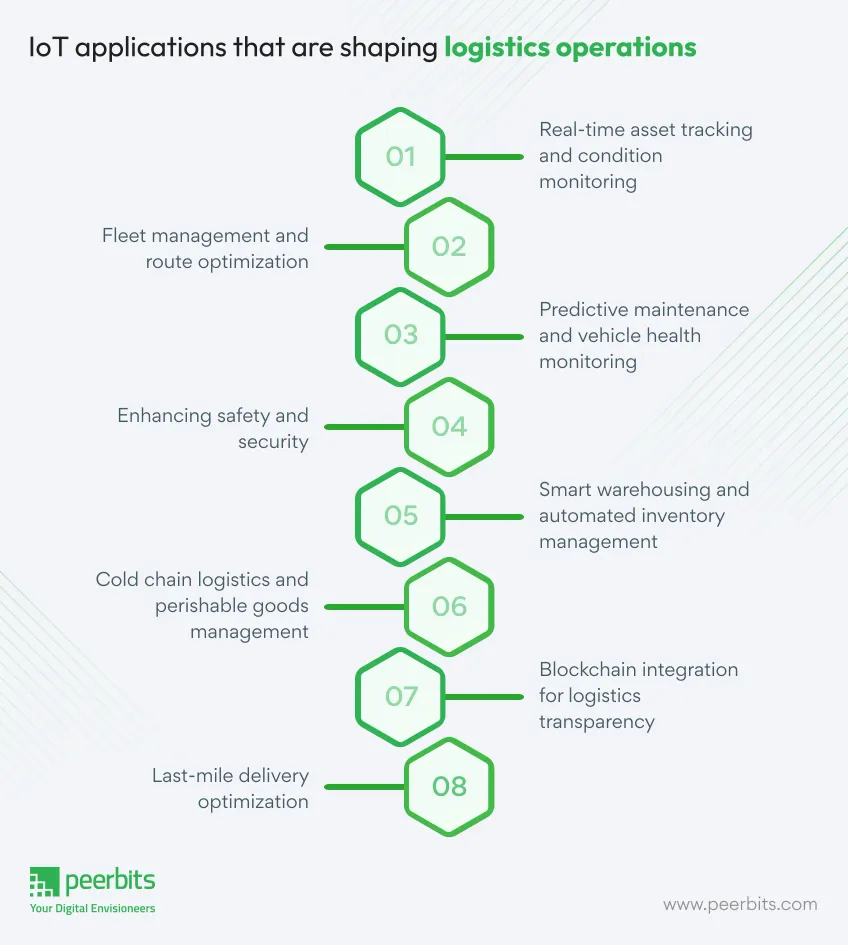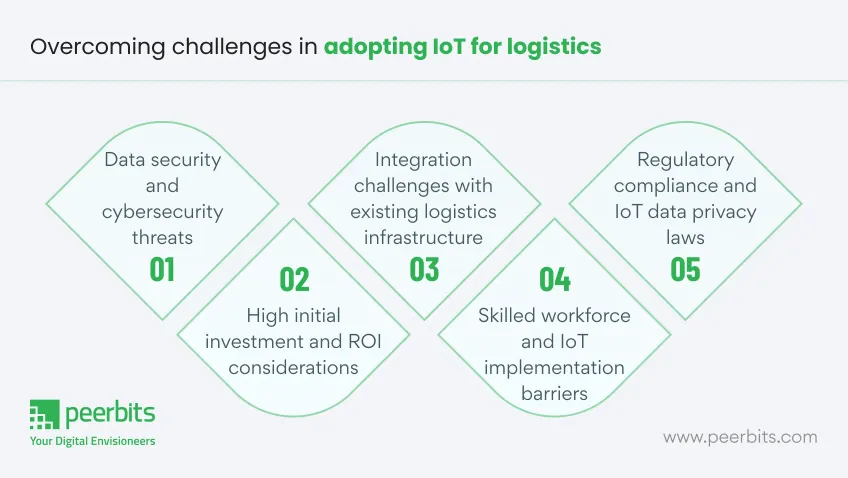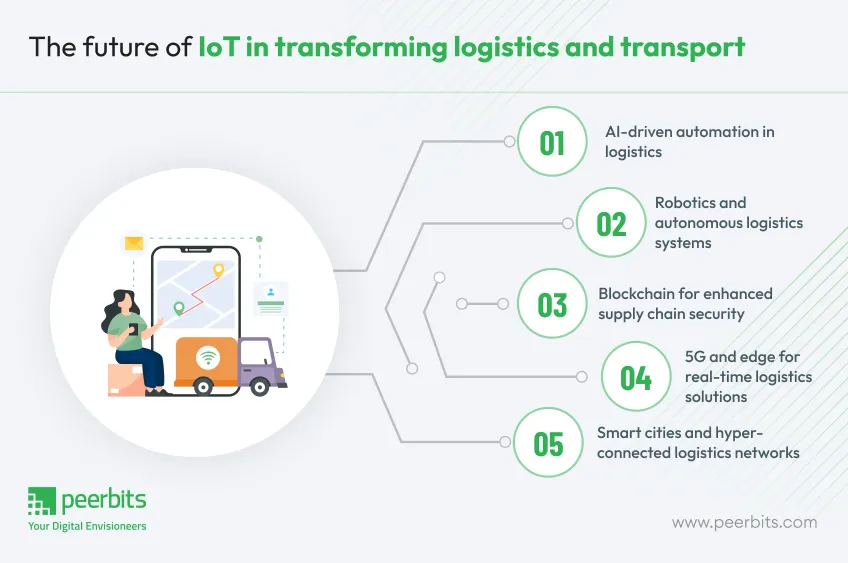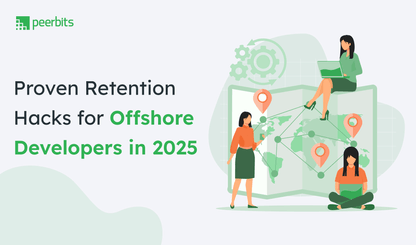The IoT impact in the transport industry and logistics industry has changed the way of businesses managing their supply chains. With IoT in transportation and logistics, companies now gain real-time visibility, helping them track assets, optimize fleet management, and improve inventory control.
Before IoT, logistics faced several challenges, such as limited visibility into shipments, inefficient route planning, and unpredictable equipment failures. Managing inventory and fulfilling orders also proved difficult, leading to delays and errors.
Today, businesses are investing heavily in IoT-driven logistics software to address these issues. The technology authorizes real-time tracking, predictive maintenance, and data-driven route optimization, resulting in faster deliveries, reduced costs, and enhanced security.
As IoT continues to develop the industry, companies increasingly depend on these solutions to stay competitive and improve service reliability. Let's explore some of the role, application, impact and challenges of IoT in logistics & transportation industry
The role of IoT in transport and logistics
IoT is changing how businesses manage transportation and logistics. IoT offers real-time data to improve tracking, route management, and security by connecting devices and assets. This shift helps businesses optimize operations, reduce costs, and stay competitive in a fast-paced market.
Let’s explore how IoT is driving these improvements in logistics
Role of IoT in logistics and supply chain
In logistics and supply chain management, IoT refers to a network of interconnected devices and sensors that collect, share, and analyze data. These devices are embedded in assets like vehicles, shipments, and warehouses, letting businesses monitor and manage their operations in real-time.
Using IoT, companies can optimize their supply chains, improve decision-making, and ensure smoother operations.
Core technologies: IoT sensors, GPS, cloud computing, AI, blockchain, 5G
Several key technologies drive IoT applications in transport and logistics:
- IoT sensors: These sensors monitor environmental conditions such as temperature, humidity, and location to ensure goods are transported under the right conditions.
- GPS: Provides real-time location data for shipments, enabling businesses to track assets throughout the supply chain.
- Cloud computing: Centralizes data storage, making it accessible to all stakeholders for smooth communication and decision-making.
- AI: Analyzes collected data to generate predictive insights, enabling proactive decision-making and optimization of routes and schedules.
- Blockchain: Enhances security and transparency by providing a tamper-proof ledger for transactions, ensuring trust among parties.
- 5G: Offers faster data transfer and connectivity, allowing businesses to handle a greater number of connected devices with minimal delays.
Read more: How IoT is transforming variety of industries worldwide?
How these technologies can impact logistics and transportation
The integration of these technologies into logistics and transportation has brought benefits of IoT in transportation:
-
Cost savings: Predictive maintenance through IoT sensors helps avoid unexpected breakdowns and repairs, leading to reduced operational costs. Route optimization powered by real-time data also lowers fuel consumption.
-
Efficiency: IoT-enabled fleet management and route planning let businesses deliver goods faster, optimize routes, and reduce delivery delays.
-
Security: IoT sensors improve the security of goods by monitoring conditions during transport and preventing theft or damage. Real-time tracking also adds an extra layer of security by providing constant updates on asset locations.
Key IoT applications in transport and logistics
IoT is driving significant improvements across multiple areas of logistics operations. The following are key IoT applications making an impact:

1. Real-time asset tracking and condition monitoring
- GPS and geolocation: Precise shipment tracking through real-time location data, ensuring goods are where they need to be at any given time.
- IoT sensors: Monitor conditions such as temperature, humidity, vibration, and damage, ensuring products are transported under optimal conditions.
- Real-time alerts: Instant notifications of delays or condition deviations allow for quick action, reducing potential losses or disruptions.
2. Fleet management and route optimization
- IoT-powered fleet tracking: Telematics systems provide fleet managers with insights into vehicle locations, performance, and fuel usage.
- AI-based route optimization: Using real-time data, AI calculates the most efficient routes, minimizing fuel costs and reducing delivery times.
- Traffic and weather rerouting: Data-driven systems reroute deliveries based on traffic and weather conditions, ensuring timely arrivals.
3. Predictive maintenance and vehicle health monitoring
- Real-time diagnostics: Monitoring vehicle performance helps detect issues early, preventing breakdowns and expensive repairs.
- Predicting equipment failures: IoT sensors can forecast potential failures, enabling proactive maintenance and reducing unplanned downtime.
- Cost savings: Preventive maintenance helps businesses save on repair costs and extends the lifespan of vehicles.
4. Enhancing safety and security
- Driver behavior monitoring: IoT systems track driving habits, such as speed and braking, helping prevent accidents caused by reckless driving.
- Cargo security: Smart locks, geofencing, and remote monitoring ensure that shipments remain secure throughout their journey.
- Theft prevention: AI-based surveillance systems detect unusual activity, improving the overall security of the supply chain.
5. Smart warehousing and automated inventory management
- IoT-powered robotics: Automation in warehouses speeds up processes like sorting, packing, and transporting goods, reducing human error.
- RFID and sensor-based inventory tracking: RFID tags and sensors help track inventory in real-time, improving stock accuracy.
- AI-driven demand forecasting: AI uses historical data to predict demand, optimizing stock levels and reducing the risk of overstocking or stockouts.
6. Cold chain logistics and perishable goods management
- Real-time temperature and humidity monitoring: IoT sensors track and maintain the required conditions for perishable goods, ensuring freshness.
- Automated alerts: Instant notifications of temperature or humidity deviations help maintain product quality and reduce waste.
- Regulatory compliance: IoT ensures that temperature-sensitive shipments meet industry regulations, especially in pharmaceuticals and food.
7. Blockchain integration for logistics transparency
- IoT and blockchain: Together, these technologies help prevent fraud by providing transparent and secure transaction records.
- Tamper-proof shipment data: Blockchain ensures the integrity of shipment data, protecting it from alterations.
- Smart contracts: These enable automated, secure transactions, reducing paperwork and administrative tasks in logistics.
8. Last-mile delivery optimization
- IoT in last-mile tracking: Real-time tracking of shipments improves efficiency and customer experience, making the next-gen transportation apps more user-centric.
- Drone and autonomous vehicles: These technologies are improving delivery speeds and reducing human labor costs in last-mile logistics.
- Customer notifications and ETA tracking: IoT-based systems provide customers with accurate delivery times, enhancing satisfaction.
IoT’s impact on supply chain efficiency and sustainability
IoT is playing a significant role in making supply chains more efficient and sustainable. From reducing environmental impact to optimizing resources, the integration of IoT offers numerous benefits for businesses and the planet.
Reducing fuel consumption and CO₂ emissions
IoT-enabled fleet tracking and route optimization help identify the most fuel-efficient paths. By reducing idling time, optimizing load distribution, and rerouting vehicles based on traffic conditions, businesses can cut down on fuel usage and minimize CO₂ emissions.
Lowering operational waste through smart monitoring
With IoT sensors, businesses can monitor and control the conditions of goods during transit, ensuring products are delivered in optimal condition. This reduces waste due to spoilage or damage.
Sustainability through optimized fleet usage and predictive analytics
IoT helps businesses maximize fleet usage through data-driven insights. Predictive analytics can forecast demand and vehicle requirements, ensuring the fleet is operating at peak efficiency without overuse of resources.
Challenges and considerations in IoT adoption
While the benefits of IoT in logistics are clear, there are challenges that businesses must address before successfully integrating IoT solutions. Below are some of the key considerations when adopting IoT in logistics.

1. Data security and cybersecurity threats
As more devices and systems become interconnected, the risk of cyberattacks increases. Protecting sensitive data from breaches and ensuring the integrity of IoT networks is a significant concern.
Businesses must invest in robust cybersecurity measures to safeguard logistics data and prevent unauthorized access, ensuring the trust of customers and partners.
2. High initial investment and ROI considerations
The adoption of IoT solutions often requires substantial upfront investment in hardware, software, and system integration. Companies may struggle to justify the costs without clear projections of ROI.
While IoT can lead to long-term savings, businesses need to assess the initial financial commitment carefully and have a clear strategy for realizing returns on their investment.
3. Integration challenges with existing logistics infrastructure
Many businesses have legacy systems in place that may not be compatible with new IoT technologies. Integrating IoT solutions with existing logistics infrastructure—such as fleet management software, warehouse systems, and supply chain platforms—can be complex and time-consuming.
Successful integration requires careful planning, testing, and collaboration between IT and operations teams.
4. Skilled workforce and IoT implementation barriers
Implementing IoT solutions requires expertise in areas like data analysis, network management, and sensor technology. A shortage of skilled workers or insufficient training can hinder the effective deployment of IoT systems.
Companies need to invest in training their workforce or partner with external IoT specialists to bridge this skills gap and ensure smooth adoption.
5. Regulatory compliance and IoT data privacy laws
As businesses collect vast amounts of data from IoT sensors, they must navigate various data privacy laws and regulations. Compliance with laws such as GDPR and industry-specific regulations is essential to avoid fines and reputational damage.
Ensuring that IoT systems are designed with data privacy in mind is key to staying compliant and protecting sensitive customer information.
Read more: How the Internet of Things is revolutionizing industrial automation?
Future of IoT in transport and logistics
As IoT continues to transform logistics, the future holds even more exciting developments. Emerging technologies are set to make operations more efficient, secure, and environmentally friendly.

Let’s take a look at the innovations that are shaping the future of IoT in this industry.
1. AI-driven automation in logistics
AI is poised to revolutionize logistics by automating critical processes, from fleet management to warehouse operations. Systems built with AI development services can analyze massive datasets to forecast demand, allowing for precise inventory management and resource allocation.
Predictive analytics will become more accurate, helping businesses anticipate trends, optimize routes, and reduce operational costs.
2. Robotics and autonomous logistics systems
Robotics in logistics is growing rapidly, particularly in warehouses where robots handle tasks like picking, packing, and sorting goods. This improves efficiency and reduces errors. IoT-based robotic arms are taking automation to the next level, making operations more precise and faster.
Self-driving trucks and automated freight transport are also transforming logistics, lowering transportation costs and speeding up deliveries. Drones are playing a key role in inventory audits and last-mile deliveries, all controlled through IoT networks to ensure faster, more efficient service.
3. Blockchain for enhanced supply chain security
Blockchain technology is expected to provide an extra layer of security and transparency in logistics operations. Blockchain ensures the integrity of the data being shared across the supply chain by authorizing tamper-proof shipment tracking.
Smart contracts powered by blockchain can automate transactions, reducing paperwork and increasing operational efficiency while enhancing trust among stakeholders.
4. 5G and edge for real-time logistics solutions
The advent of 5G and edge computing will take real-time logistics monitoring to new heights. 5G’s ultra-fast data transmission capabilities will allow IoT devices to communicate almost instantaneously, improving decision-making speed.
Edge computing will complement this by processing data closer to the source, reducing reliance on centralized cloud systems and enabling quicker responses to changes in logistics operations, such as sudden delays or route changes.
5. Smart cities and hyper-connected logistics networks
Looking further ahead, the concept of smart cities will integrate IoT technology into urban infrastructure, including transportation networks and logistics operations. IoT-powered systems will help manage traffic congestion more effectively, improving delivery efficiency.
Urban drone delivery hubs, smart transport grids, and connected infrastructure will form a hyper-connected logistics network that enhances urban mobility and reduces delivery times.
Conclusion
IoT is playing a key role in improving efficiency, security, and operations within logistics and transport. With tools like real-time asset tracking and fleet optimization, IoT is providing valuable benefits across the supply chain.
Businesses can enhance their operational efficiency and strengthen security by investing in IoT development services. As the technology evolves, IoT will continue to create new opportunities for growth, better connectivity, and more sustainable practices in the transport and logistics sector.









